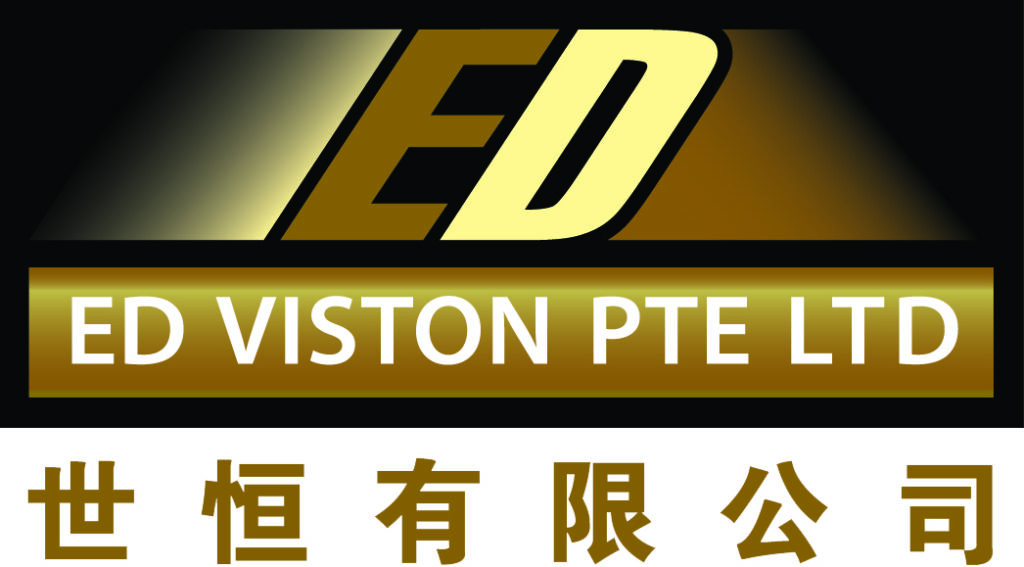Singapore’s security tech market is booming, valued at $283 million and growing at 8.3% annually. With urban density at 98%, demand for advanced surveillance is rising. Many companies now prioritize upgrades, making this sector a smart investment.
Starting a venture here offers access to the ASEAN market. Initial costs range from S$50,000 to S$300,000, depending on scale. Using NDAA-compliant parts can open doors to government contracts. Integration with Singapore’s Smart Nation infrastructure adds further potential.
Stand out by incorporating AI analytics and edge computing. These features enhance video coverage and system efficiency. With the right strategy, your business can thrive in this competitive space.
Key Takeaways
- Singapore’s security tech market is expanding rapidly.
- High urban density drives demand for advanced systems.
- Initial investments vary based on business scale.
- NDAA compliance helps secure government projects.
- AI and edge computing provide a competitive edge.
Understanding the CCTV Camera Market in Singapore
Singapore’s urban landscape is driving unprecedented demand for advanced surveillance solutions. With 89% of businesses already using these systems, the market reflects a strong preference for reliable protection.
Current Demand for Security Systems
Government mandates like the HDB carpark ANPR system rollout by 2025 highlight the push for smarter infrastructure. Commercial sectors increasingly favor 8MP 4K cameras with 25X zoom for sharper coverage.
Cloud-based solutions grew 34% year-over-year, as businesses seek scalable security systems. The Personal Data Protection Act (PDPA) also influences storage practices, ensuring data compliance.
Key Trends in Surveillance Technology
Thermal imaging adoption surged 140% post-COVID, ideal for crowd monitoring. Changi Airport’s AI-powered network of 9,000 cameras showcases how automation enhances real-time analysis.
Integration with Singapore’s Smart Nation framework, including LTA’s 200,000+ public devices, underscores the shift toward interconnected surveillance ecosystems.
Why Start a CCTV Camera Assembling Business?
Urbanization and safety concerns are fueling demand for reliable surveillance solutions in Singapore. High-density housing and commercial hubs require advanced security measures, creating a steady market for innovators.
Growing Security Needs in Urban Areas
Over 80% of residents in Singapore’s compact neighborhoods prioritize smart home systems. Commercial clients invest an average of S$18,000 per installation, driven by stricter safety regulations.
Integration with Singapore’s network of smart infrastructure, like traffic sensors, adds value. Thermal imaging and AI analytics are now standard requests for urban projects.
Profit Margins and Revenue Streams
High-end IP systems yield gross margins of 42–58%. Recurring revenue thrives too—73% of clients opt for managed services, ensuring stable cash flow.
BCA-approved certifications boost contract values by 35%. Maintenance services further deliver 22% EBITDA margins, making this a resilient model.
Export opportunities to Malaysia and Indonesia, supported by Singapore’s FTAs, expand your reach. Imaging sensors, the costliest component (68%), can be sourced competitively from regional suppliers.
Legal and Regulatory Requirements
Navigating Singapore’s legal landscape ensures your operations meet industry standards. From licenses to privacy laws, compliance builds credibility and avoids costly penalties.
Business Licenses and Permits
Start with ACRA registration—a process completed in three working days. For surveillance providers, the BCA Grade SC1 license is mandatory. It validates your technical capability for large-scale projects.
Wireless systems require IMDA Type Approval. This ensures they don’t interfere with national networks. Liability insurance of at least S$2M is another non-negotiable, shielding your venture from claims.
“CASE Trust accreditation signals reliability to consumers, differentiating your brand in crowded markets.”
Compliance with Privacy Laws
Singapore’s PDPA governs how you collect and store *data*. The 2024 amendment tightens cross-border transfer rules. Implement access controls and encryption to align with these updates.
The Cybersecurity Code of Practice (CCoP) dictates storage protocols. For example, footage must be encrypted if stored offshore. Violations can lead to fines up to 10% of annual revenue.
- Step 1: Register with ACRA and obtain BCA certification.
- Step 2: Secure IMDA approval for wireless devices.
- Step 3: Draft PDPA-compliant data policies.
Essential Equipment for CCTV Camera Assembly
Selecting the right tools and components is crucial for building reliable surveillance systems. High-quality parts ensure durability and performance, especially in Singapore’s humid climate.
Analog vs. Digital: Choosing the Right Cameras
Analog models cost 30% less but lack the vision clarity of digital IP systems. Modern 4K digital cameras offer 8MP resolution, ideal for high-traffic areas.
Key differences:
- Analog: Uses coaxial cables; limited to 1080p.
- Digital: Supports Power-over-Ethernet (PoE) for streamlined wiring.
Must-Have Tools and Machinery
Precision is non-negotiable. Invest in:
- Yamaha YSM40 pick-and-place machines for rapid PCB assembly.
- ESD-safe workstations to protect sensitive components.
- 100x digital microscopes for solder inspection (IPC-A-610 standards).
Sourcing High-Quality Components
Sony STARVIS 2 sensors outperform OmniVision in low-light conditions. For fast delivery, Avnet Singapore stocks parts like lenses and IR cut filters.
Testing protocols matter. Use 72-hour burn-in chambers to validate quality before shipping.
Steps to Start Your CCTV Camera Assembling Business
Building a successful operation in this field starts with strategic groundwork. From analyzing demand to assembling a skilled team, each phase impacts long-term growth. Here’s how to lay a strong foundation.
Market Research and Business Plan
Identify gaps in Singapore’s security tech sector. Focus on niches like AI-powered analytics or cloud-based systems. A detailed plan should cover:
- Target clients (commercial vs. residential).
- Competitor pricing for installation services.
- Projected costs for tools and compliance.
Setting Up Your Workspace
An 800 sqft ISO Class 8 cleanroom ensures precision. Compare locations—Jurong offers lower rents (S$4.50/sqft) than Woodlands (S$6.20).
Prioritize BCA-approved electrical setups and MOM-compliant fume extraction. ERP equipment like Odoo (S$1,200/month) simplifies inventory tracking.
Hiring Skilled Technicians
ITE-certified professionals command median salaries of S$3,800. Look for experience in PoE network configurations and solder techniques.
“Certified teams reduce errors by 40%, ensuring faster project delivery.”
Offer training in thermal imaging and edge computing to stay ahead.
The CCTV Camera Assembly Process
Precision engineering defines success in surveillance system production. Every phase demands technical expertise, from initial design to final packaging. Singapore’s tropical climate adds unique challenges requiring specialized solutions.
Design and Development Phase
Start with CAD software to model housing for 4K cameras. The IPC-7711/21 standard guides military-grade PCB layouts. Six Sigma DMAIC methods reduce defects by 28% during prototyping.
Thermal management is critical. Include heat sinks for components like Sony STARVIS 2 sensors. Proper spacing ensures stable performance in 90% humidity.
Component Sourcing and Quality Control
Partner with ISO-certified suppliers for lenses and IR filters. Automated optical inspection (AOI) systems scan for soldering defects at 0.1mm resolution. This step catches 99.6% of faults before final assembly.
Power supply units undergo 72-hour burn-in tests. Only parts passing MIL-STD-810G vibration standards proceed to production. Document every batch for enterprise clients requiring MTBF certification.
Testing and Packaging
The Fluke CNX 3000 validates network connectivity and PoE performance. Night vision models get tested in light chambers simulating 0.001 lux conditions.
Export-ready packaging uses anti-tamper seals and moisture barriers. Include multilingual quick-start guides for ASEAN markets. Final QC checks verify all tools and accessories before shipping.
Types of CCTV Cameras You Can Assemble
Choosing the right designs for your product line impacts performance and market appeal. Different environments demand unique features, from weather resistance to advanced analytics. Understanding these variations helps tailor solutions to client needs.
Bullet and Dome Designs
Bullet models excel in long-range monitoring, with Sony IMX678 sensors capturing crisp details up to 100 meters. Their cylindrical shape suits outdoor areas like parking lots.
Dome options blend discreetly indoors. The anti-tamper housing deters vandalism in high-traffic zones. Both styles support IP68 ratings for marine-grade durability.
Pan-Tilt-Zoom and Covert Units
PTZ systems offer 360° coverage with 25X zoom. Look for motors handling 40Nm torque—essential for stability in Singapore’s monsoon winds. Some models integrate with existing security networks.
Hidden units comply with POHA regulations. These maintain privacy while providing evidence-grade footage. Micro designs fit seamlessly into retail displays or office decor.
Specialized Low-Light Solutions
Starlight sensors like IMX585 deliver color video at 0.001 lux. Pair them with 850nm IR illuminators for optimal night vision range. Thermal models detect heat signatures within ±2°C accuracy—ideal for perimeter monitoring.
ANPR systems achieve 98.3% plate recognition. These are perfect for toll gates or secured facilities requiring automated access control.
Costs and Budgeting for Your Business
Financial planning separates thriving ventures from struggling startups in Singapore’s security tech sector. Smart allocation of resources ensures your operation maintains quality while scaling efficiently. The right balance between upfront costs and long-term value determines profitability.

Initial Investment Breakdown
A surface-mount technology production line requires approximately S$28,500. This covers essential equipment like pick-and-place machines and reflow ovens. Imported components may incur 7% GST, though JTC rental subsidies can offset 30% of facility expenses.
Energy efficiency grants support ISO 50001 compliance, reducing power expenditures by 18-22%. Factor in a warranty reserve fund—typically 5% of hardware costs—to cover potential repairs during the ROI period of 18-24 months.
Ongoing Operational Costs
Monthly expenses include S$1,200 for cloud storage solutions and S$4.50/sqft for industrial space. DBS offers SME loans at 3.8% p.a. for equipment upgrades, helping manage cash flow during expansion phases.
Preventative maintenance preserves quality standards while minimizing downtime. Allocate 15% of revenue toward R&D to stay competitive. Smart power management systems can cut electricity costs by 35% in climate-controlled storage areas.
“Proper budgeting transforms fixed expenses into strategic advantages for growth-focused operations.”
Marketing Your CCTV Camera Business
Reaching the right audience requires tailored strategies for residential and commercial buyers. Singapore’s security market rewards precision targeting—residential customers cost S$120 to acquire, while commercial clients average S$450.
Targeting Residential and Commercial Clients
Homeowners prioritize affordability and ease of use. Highlight features like mobile access or smart home integration. For businesses, emphasize scalability and compliance with PDPA.
Partner with Building Management System integrators for B2B leads. CASE Trustmark certification boosts trust, increasing conversion rates by 22%.
Digital Marketing Strategies
Google Ads for security keywords convert at 6.8%. Carousell’s 3% fee structure outperforms Qoo10 for cost-effective product listings.
360° factory tours showcase production quality. Government tenders via GeBIZ require pre-registration but offer high-value contracts.
“Video campaigns explaining AI analytics reduce customer education costs by 40%.”
Installation and Maintenance Services
Service contracts generate 35% higher lifetime value than hardware sales alone. In Singapore, SMEs pay an average of S$1,200/year for ongoing support, making this a lucrative revenue stream. Pairing quality products with responsive care builds trust and reduces churn.
Offering Value-Added Services
Meet SCDF fire safety standards by integrating smoke detection with surveillance systems. Predictive maintenance using IoT sensors cuts downtime by 40%, while Uptime Tier III certification appeals to enterprise customers.
Extended warranties (3+2 years) boost profits with minimal overhead. Use CRM tools like HubSpot to track service histories and automate reminders.
Building Long-Term Customer Relationships
Guarantee 4-hour response times for critical failures—this exceeds local market expectations. Train staff to explain features like remote access, empowering clients to use their systems effectively.
“Clients renew contracts 73% more often when providers offer free quarterly maintenance checks.”
- Bundle installation with annual check-ups for recurring revenue
- Offer tiered service plans (Basic/Premium/Enterprise)
- Integrate with building network management platforms
Scaling Your Business for Growth
Reaching new markets and diversifying offerings are key steps for long-term success in Singapore’s competitive tech landscape. Strategic expansion unlocks higher revenue streams while future-proofing your operations against market shifts.
Expanding Product Lines
Adding AI-powered analytics to your system portfolio can increase margins by 35%. Thermal imaging modules are another high-demand option, especially for industrial clients.
Consider these growth avenues:
- AIoT integration: Partner with ST Engineering for smart city projects
- Hybrid solutions: Combine cloud storage with edge computing
- Specialized units: Develop NDAA-compliant models for government contracts
Exploring Export Opportunities
ASEAN markets show 22% annual growth for security tech. Malaysia and Indonesia offer strong potential, but require local compliance certifications.
Key steps for global expansion:
- Obtain CE and FCC marks for European/American markets
- Complete Halal certification for Middle East clients
- Implement ASEAN Model Contract Clauses for cross-border data flows
“EDB’s TID program offers 250% tax deductions on R&D spending, making innovation more affordable for scaling businesses.”
Merger opportunities exist too—valuation multiples of 8-12x EBITDA are common. Focus on building proprietary tech to maximize your company’s worth.
Common Challenges and How to Overcome Them
Every successful security tech venture faces hurdles—here’s how to clear them. From supply bottlenecks to skilled labor shortages, proactive planning keeps your business ahead. Singapore’s market rewards those who tackle these issues head-on.
Competition and Differentiation
Stand out by bundling AI analytics with hardware. For example, offer free quarterly health checks for systems—73% of customers renew contracts with this perk. Target niches like marine-grade solutions for Singapore’s ports.
SkillsFuture’s Earn and Learn program trains staff in edge computing. Certified teams reduce defects by 40%, boosting quality perceptions. CASE Trust accreditation further builds trust.
Technical and Operational Hurdles
Sony sensor lead times hit 26 weeks—mitigate this with AVNET’s VMI programs. Multi-source critical components like IR filters from Japan and Taiwan.
Cybersecurity threats rose 143% in 2023. Isolate security networks and mandate MFA for all devices. Regular penetration tests meet IMDA’s updated CCoP rules.
“JTC’s rental subsidies offset 30% of facility costs, making scaling easier for SMEs.”
For tailored business security solutions, partner with integrators who understand local compliance needs.
Taking the First Step Toward Your CCTV Business Success
Launching a security tech venture in Singapore requires careful planning and swift execution. Focus on securing essential certifications and building supplier relationships in your first 90 days. EDB grants can cover up to 70% of initial tech costs, easing financial pressure.
Start small by targeting condo management committees. These clients often need affordable systems with straightforward installation. Joining mentorship programs like SMF’s SME Leaders Network provides valuable industry insights.
Track key metrics like first-pass yield (aim for 83%) to ensure quality. Keep return rates below 2.5% by testing demo units thoroughly. With the right strategy, your venture can thrive in Singapore’s competitive market.

